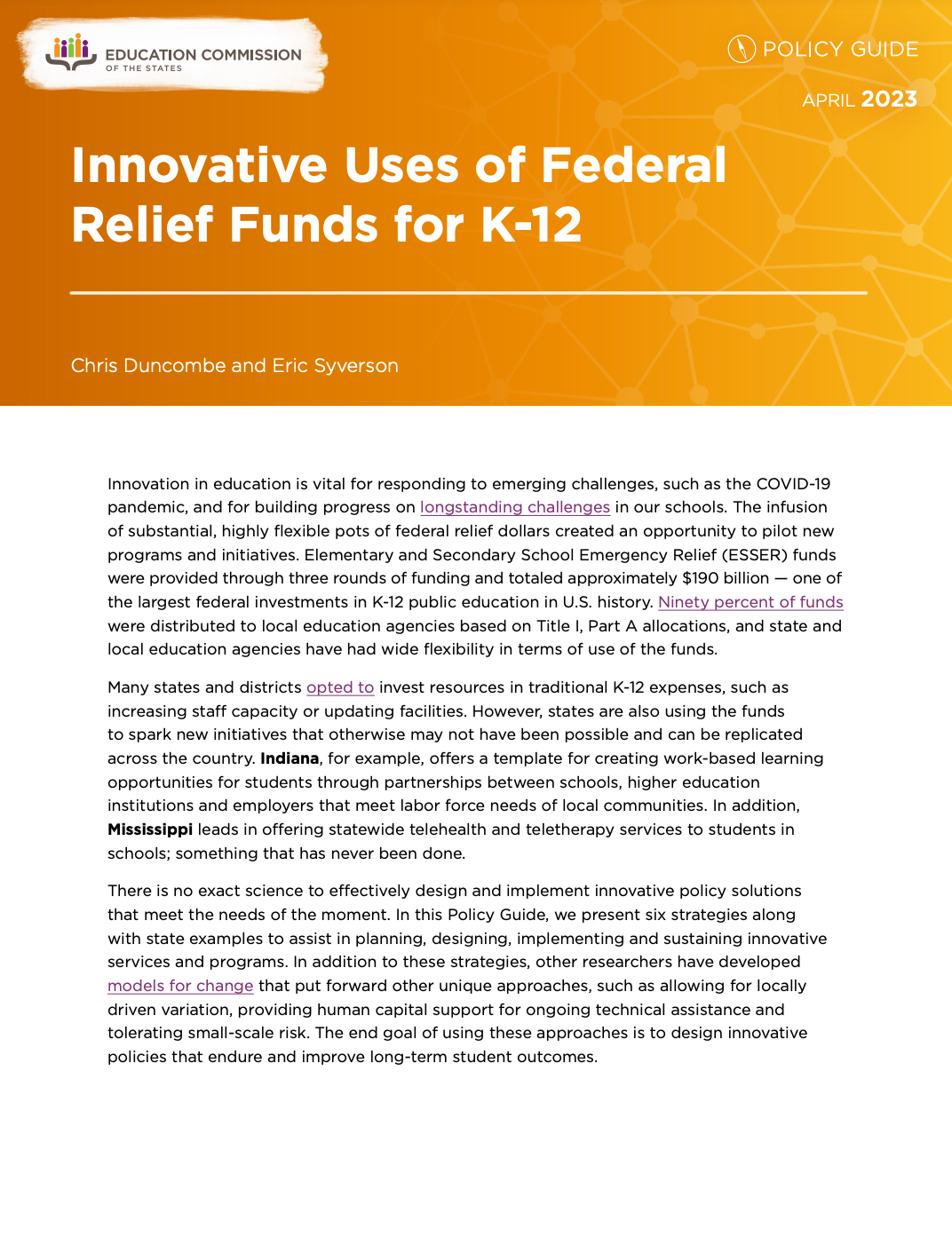Trends In State Strategies
State policymakers continue to pursue new approaches for this historic investment to overcome the challenges experienced daily by students, teachers and school leaders. Among the approaches states have used to create and expand programs and services, we found that states are using the following innovative strategies:
 Strategically identify needs of local communities. In developing plans, education agencies were required to meaningfully engage stakeholders and take public input into consideration. Some states have successfully integrated the needs of local communities into their spending.
Strategically identify needs of local communities. In developing plans, education agencies were required to meaningfully engage stakeholders and take public input into consideration. Some states have successfully integrated the needs of local communities into their spending.
 Form new school district partnerships. Rather than doing it alone, states can encourage school districts to forge new collaborative relationships.
Form new school district partnerships. Rather than doing it alone, states can encourage school districts to forge new collaborative relationships.
 Equitably direct resources to students. The COVID-19 pandemic had disparate impacts on U.S. students, with many facing barriers such as housing uncertainty, limited access to technology and food insecurity. Some states have directed resources to where they are needed most and can have the biggest impact.
Equitably direct resources to students. The COVID-19 pandemic had disparate impacts on U.S. students, with many facing barriers such as housing uncertainty, limited access to technology and food insecurity. Some states have directed resources to where they are needed most and can have the biggest impact.
 Implement technology-based solutions. Throughout the COVID-19 pandemic, state and local education policymakers turn to technology to meet students’ immediate needs. We found that states have doubled down on their technological investments to support students.
Implement technology-based solutions. Throughout the COVID-19 pandemic, state and local education policymakers turn to technology to meet students’ immediate needs. We found that states have doubled down on their technological investments to support students.
 Enhance performance monitoring to support students. Not all students have the same needs, so states have used their own metrics to target investments and monitor outcomes.
Enhance performance monitoring to support students. Not all students have the same needs, so states have used their own metrics to target investments and monitor outcomes.
 Ensure sustainability of federally funded programs. Many in the education community have expressed concerns about the long-term viability of ARP-funded programs once federal funding is depleted. States can plan now for continuing services beyond the spending deadline. ow for continuing services beyond the spending deadline.
Ensure sustainability of federally funded programs. Many in the education community have expressed concerns about the long-term viability of ARP-funded programs once federal funding is depleted. States can plan now for continuing services beyond the spending deadline. ow for continuing services beyond the spending deadline.
This project has been made possible in part by a grant from the Chan Zuckerberg Initiative.




